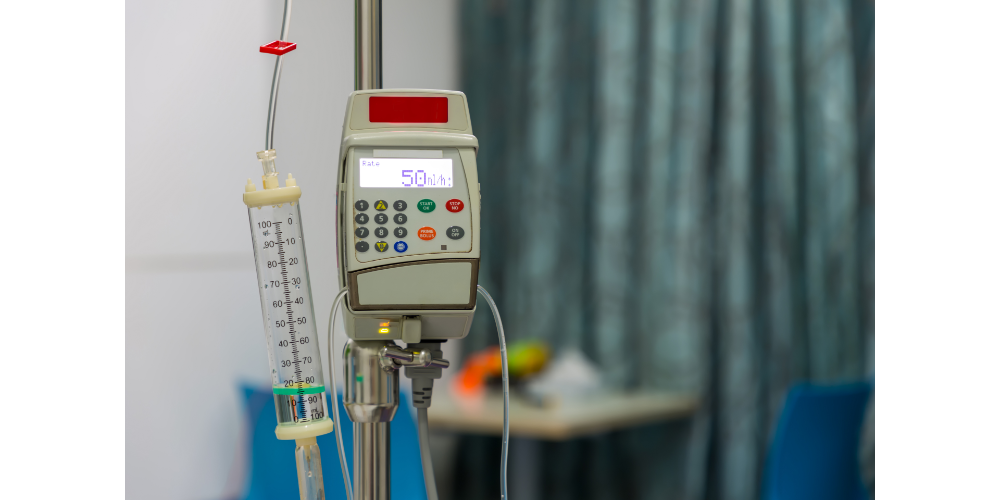Heparin, a blood thinner, has been labeled a high-risk medication by the Institute of Safe Medicine Practices. Heparin is used to treat or prevent blood clots.
Heparin dosing is challenging say pharmacists like Dr. Deborah Booth, a USF College of Public Health graduate who earned her MPH in December, because patient-specific factors, such as age or weight, can alter the medication’s properties.

Deborah Booth, PharmD, MPH, MS, a COPH grad and clinical pharmacy specialist at Overlook Medical Center in Summit, N.J. (Photo courtesy of Booth)
Booth and her colleagues decided to look at whether a heparin infusion calculator
could reduce medication errors if it were embedded into the patient’s electronic health
record. Their research, “Implementation of a Heparin Infusion Calculator in the Electronic Health Record System
as a Risk-Mitigation Strategy in a Community Teaching Hospital Emergency Department,” was published in January in the Journal of Emergency Nursing.
“When the medication is scanned by the nurse, the calculator is displayed,” explained
Booth, who is a clinical pharmacy specialist at New Jersey’s Overlook Medical Center,
part of the Atlantic Health System. “It helps assist with the dosing and gives monitoring
reminders based on previous administration data and actions taken.”
In the study of 356 patients, doses were administered incorrectly in 13.9% of cases
when the calculator was used versus in 23.3% of cases when it was not used. In addition,
drip rates were incorrect in roughly 4% of cases when the calculator was used versus
in 10.26% when the calculator was not in use.

Photo source: Canva
According to Booth, using the calculator can give patients and their health care providers
another layer of safety when it comes to dosing and administering high-risk drugs
like heparin.
“Other methods to reduce errors exist, but in the Swiss Cheese Model of medication
safety, there can still be gaps,” said Booth, who concentrated in global disaster management, humanitarian relief and homeland security. “We utilize multiple strategies and approaches to try to place barriers to those
gaps to help reduce the potential for medication-related events. None of the other
methods are inferior or inadequate. We just continue to add support for our team members
to help guide them. The calculator adds that extra value into the care for these patients
in a non-intrusive way.”
Since medication errors directly impact a patient’s well-being, protecting against
them can significantly improve population health.
“This modality of incorporating the calculator helps advance public health initiatives by streamlining the medication-use process to reduce adverse events,” Booth said. “We want to improve safety for patients by guiding decision-making and giving clinicians and health care providers risk-mitigation strategies.”
Alumni Fast Five:
What did you dream of becoming when you were young?
Before high school it was a writer/author of a fantasy novel, during high school it was organic chemist or pharmacist.
Where would we find you on the weekend?
If I'm not working at the hospital I would be knitting/reading, or during the summer kayaking. The choir I'm part of set up a knitting circle, so we try to hang out monthly to knit together.
What is the last book you read?
“Ruthless Vows,” by Rebecca Ross. I'm currently reading “House of Earth and Blood.” by Sarah J. Maas since her 3rd book in the series just was released.
What superpower would you like to have?
I love the Feruchemy system in Brandon Sanderson's Mistborn series. It allows one the ability to store their own power and use it later. For example, you can store speed by being a little slower now and being faster later.
What's your all-time favorite movie?
“Frozen.” I have two younger sisters and I love the relationship of Elsa and Anna.